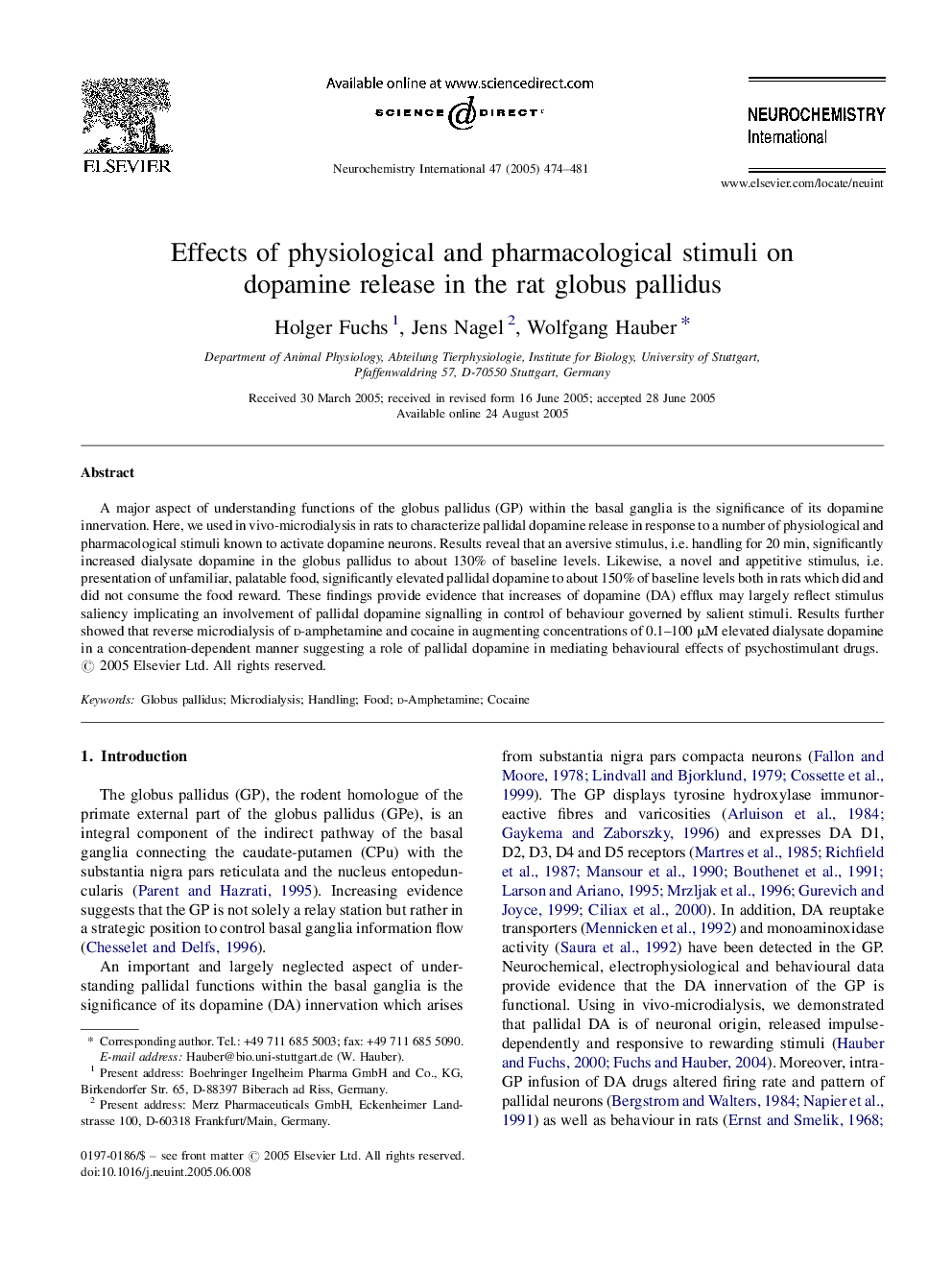| Article ID | Journal | Published Year | Pages | File Type |
|---|---|---|---|---|
| 10958449 | Neurochemistry International | 2005 | 8 Pages |
Abstract
A major aspect of understanding functions of the globus pallidus (GP) within the basal ganglia is the significance of its dopamine innervation. Here, we used in vivo-microdialysis in rats to characterize pallidal dopamine release in response to a number of physiological and pharmacological stimuli known to activate dopamine neurons. Results reveal that an aversive stimulus, i.e. handling for 20 min, significantly increased dialysate dopamine in the globus pallidus to about 130% of baseline levels. Likewise, a novel and appetitive stimulus, i.e. presentation of unfamiliar, palatable food, significantly elevated pallidal dopamine to about 150% of baseline levels both in rats which did and did not consume the food reward. These findings provide evidence that increases of dopamine (DA) efflux may largely reflect stimulus saliency implicating an involvement of pallidal dopamine signalling in control of behaviour governed by salient stimuli. Results further showed that reverse microdialysis of d-amphetamine and cocaine in augmenting concentrations of 0.1-100 μM elevated dialysate dopamine in a concentration-dependent manner suggesting a role of pallidal dopamine in mediating behavioural effects of psychostimulant drugs.
Related Topics
Life Sciences
Biochemistry, Genetics and Molecular Biology
Cell Biology
Authors
Holger Fuchs, Jens Nagel, Wolfgang Hauber,
